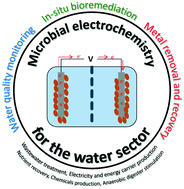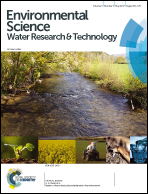Three promising applications of microbial electrochemistry for the water sector
Abstract
Microbial electrochemical technologies are based on the interactions between living microorganisms and electrodes. There is a wide range of possible applications and many are highly relevant for the water sector. The most well-known is probably the microbial fuel cell, which has been proposed as an environmentally-friendly process for simultaneous wastewater treatment and electrical energy production. However, full-scale implementation at wastewater treatment plants is very challenging and there are several other applications of microbial electrochemistry that are less well-known to people outside the research field, but potentially could be widely applied and make an impact on the water sector in a shorter time perspective. In this paper, we highlight three such applications: (i) sensors for biochemical oxygen demand, volatile fatty acids and toxicity; (ii) in situ bioremediation of contaminated sites; and (iii) removal and recovery of metals from wastewaters, leachates and brines.

- This article is part of the themed collection: Brine Mining Nexus


 Please wait while we load your content...
Please wait while we load your content...